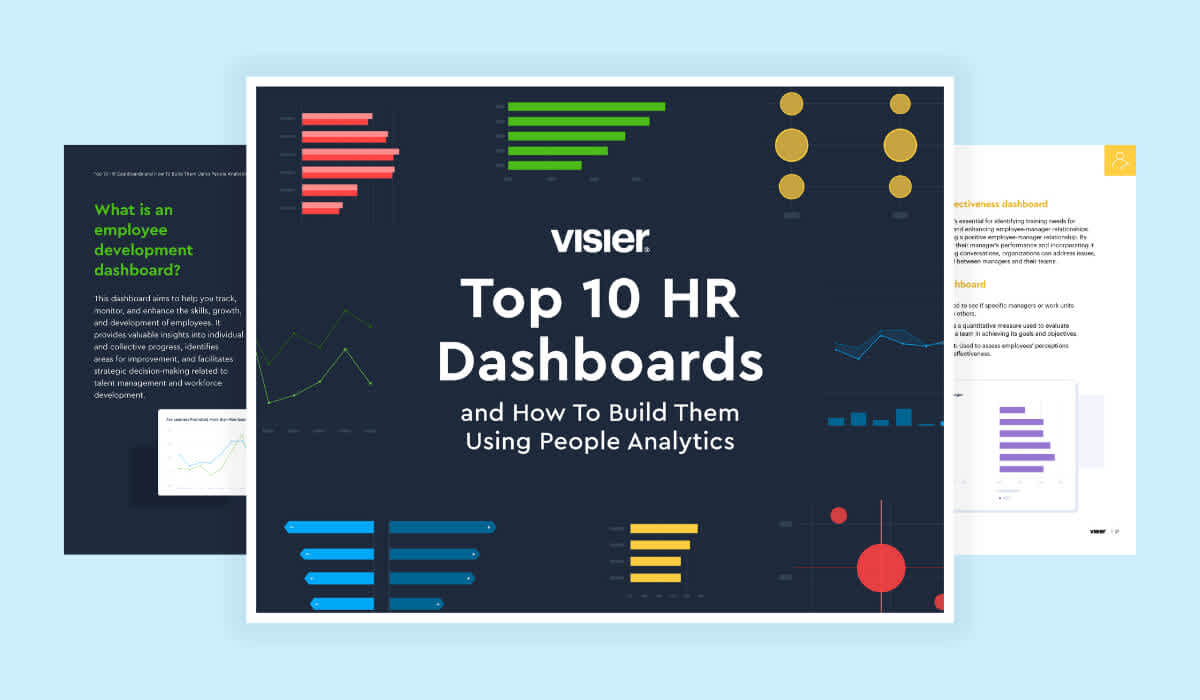Ask Visier: How Does My U.S. Company’s Diversity Compare to the EEOC Guidelines?
How does your company’s diversity compare with the EEOC guidelines? Our Senior People Analytics Consultant explains how to use benchmarking to improve diversity.

What are the EEOC guidelines?
The U.S. Equal Employment Opportunity Commission (EEOC) is responsible for enforcing federal laws that make it illegal to discriminate against a job applicant or an employee because of the person’s race, color, religion, sex (including pregnancy, transgender status, and sexual orientation), national origin, age (40 or older), disability or genetic information. Any organization in the United States which has more than a hundred people must report out gender and ethnicity to ensure there’s no discrimination between these different groups.
HR professionals should ask how their company compares with the EEOC benchmarks to gain perspective outside their own organization. Finding out your company significantly lags behind others with regards to diversity can provide the momentum for change. It also gives a data set to show how your organization compares with your peers.
Every organization is going to be different on their journey towards diversity, equity, and inclusion. However, you can’t measure progress without solid data, and comparing company demographics against the EEOC guidelines is a good start.
Why diversity matters
Moving towards a more diverse employee base isn’t just a feel-good endeavor. Research indicates that diverse workforces are more innovative, perform better, and can help expand a company’s pool of prospective customers. Different backgrounds, perspectives, and life experiences generate unique ideas and solutions. Having a more varied workforce gives a variety of perspectives which also helps guard against groupthink.
One of the things we’ve found is that more and more leaders are placing a high value on increasing diversity within their companies. Many that we work with are trying to become more transparent about the makeup of their workforce. They are sharing this data publicly on their websites to show that they’re making an effort to improve diversity. It’s not only that diverse workforces have a positive impact on organizations so they can evolve and innovate and be more efficient and effective. It’s also that many people seek out diverse organizations when deciding which company they want to work for. The Great Resignation wave is making job opportunities for everyone out there and if a company is not providing an inclusive workforce, it’s going to miss out on the best talent.

How Visier can help
Comparing your company’s data with the EEOC guidelines will give you a general overview, but for a more complete picture that lets you get industry-specific data, use Visier benchmarks. Visier offers high-level benchmarks every year gleaned from our deep customer base which can give you a clearer picture of how your company stands against others. Visier customers can analyze their employees against EEOC data using the following group by:
Ethnicity
Function
EEOC Function
Gender
Location
Industry
Visier tools allow customers to easily slice and dice their company’s data and see how it compares with the EEOC benchmarks. With EEOC in Visier, a customer can simply select the EEOC metrics and start analyzing right away.
It’s important to keep in mind that benchmarking is just one tool. To get a bigger picture, organizations can start by assessing recruitment. Do diverse candidates progress through the pipeline at the same rate as applicants overall? Are there any stages where diverse applicants do not progress at the same rates? This can highlight if there’s bias in the hiring process.
To go further, look at the entire employee lifecycle, including internal development and engagement. Many organizations will look at the data and see that diversity decreases as you go up in the hierarchy. Or they’ll see a lack of representation at the talent acquisition stage. Perhaps recruitment is fine, but their organization loses a greater percentage of minorities or women. Does your organization provide development opportunities equally? Do succession plans include all employees? Are women and employees of color engaged? Rewards matter too. Organizations that take the time to assess their people data take the first step towards improving the diversity of their organizations.
While looking harder at the data will show a more nuanced picture of the story, benchmarking can be a powerful tool to start. It can show how an organization compares to its peers, and can give a starting point to assess how DEI efforts are progressing.
Learn more about DEIB
Creating more diverse teams starts with hiring more diverse candidates. Ask, align, and act to address issues in your recruiting funnel.
Learn how successful companies are using people analytics to support diversity, equity, inclusion, and belonging (DEIB) initiatives.
Companies wishing to boost their reputation and productivity must look to diversity, equity, and inclusion. Learn more.


